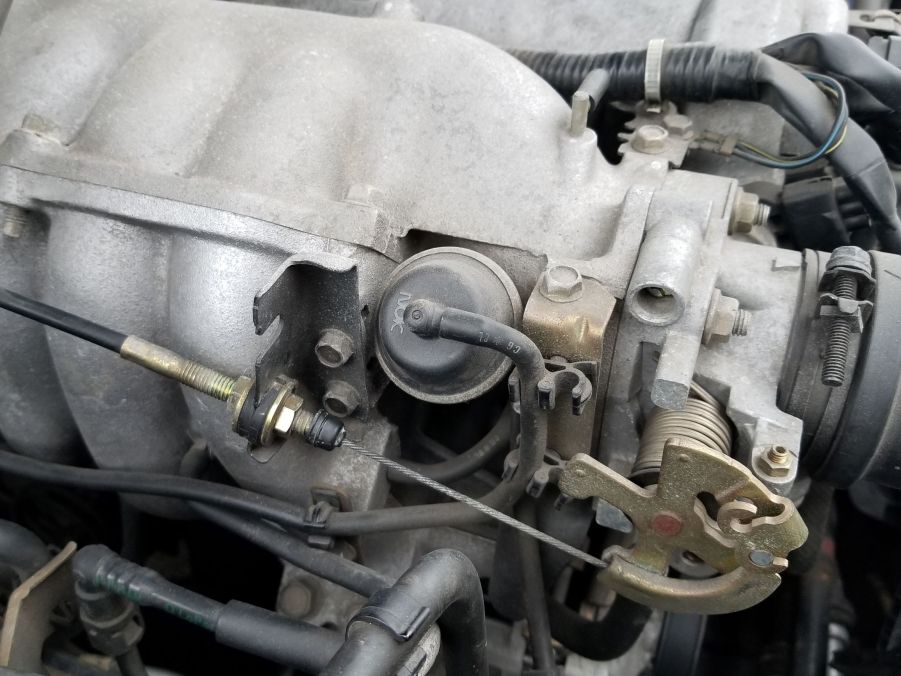
Your Throttle Cable Could Use an Adjustment
Getting an internal-combustion engine up and running requires a lot of moving parts. And without proper maintenance, the entire process can grind (sometimes literally) to a halt. Hence why fuel injectors sometimes need cleaning and spark plugs need changing, and so on. But some maintenance items need attention even if the part in question isn’t really ‘broken.’ And one example of this is your engine’s throttle cable, aka the accelerator cable.
Throttle body operation: cables vs. throttle-by-wire
Whether you have an ICE car or motorcycle, you need air to make power. And the part that controls the flow of air into your engine is the throttle body. Some vehicles have individual throttle bodies—one per cylinder—but most just have one.
Regardless of the number, each throttle body has a throttle plate, sometimes known as a butterfly valve, Spectra Premium reports. When you press the accelerator pedal or twist your bike’s throttle, this valve swings open and air rushes in. And the thing that actuates the valve is a braided metal throttle cable connected to the pedal/grip, Autoweek explains.

For the past few decades, though, the throttle cable and mechanical throttle body have slowly been replaced by electronic throttle-by-wire systems, Motorcyclist reports. These systems, known also as ‘drive-by-wire’ and ‘ride-by-wire,’ don’t have a mechanical connection between the pedal/grip and the throttle body.
Instead, when you press the pedal or twist the throttle, it sends a signal to the engine control module, which is connected to an electronic throttle body, Advance Auto Parts explains. Based on other information the ECM receives, it signals a motor within the throttle body to open or close the valve.
Replacing the throttle cable with an electronic system has several advantages, NAPA explains. For one, there are fewer parts and thus a decreased chance of failure. Secondly, a throttle-by-wire system is lighter and more accurate, and thus efficient, than a mechanical system, Oards reports.
Plus, because a throttle-by-wire system is tied into the car’s electronics, it can be made to respond faster by activating Sport Mode. It can also communicate with the traction control system and prevent accidental wide-open-throttle events, Cycle World and Autobytel explain. Throttle-by-wire systems are often tied into ADAS features, too.
Why and how do you adjust the throttle cable?

That being said, although throttle-by-wire systems started appearing in cars in the 1980s, the throttle cable persisted for many years afterward. My 1999 Mazda MX-5 Miata, for example, has a throttle cable. And the first production motorcycle with throttle-by-wire didn’t arrive until 2006, Cycle World reports.
A throttle cable has some advantages over a throttle-by-wire system. Namely, if it breaks, you can literally fix it by the side of the road, Autoweek reports. However, as anyone who owns a bicycle will tell you, cables stretch over time. And if the throttle cable stretches too much, the throttle plate doesn’t respond as quickly, Autoblog reports. Or it fails to open at all. Thus, it needs to be adjusted.
Fortunately, adjusting your throttle cable, whether you have a car or a motorcycle, is fairly straightforward. The cable connects to the throttle body via the throttle linkage, which looks like a coiled spring, Autoblog explains. The cable is kept under tension by two nuts connected to a bracket, ItStillRuns reports. Loosening these nuts allows you to slide the cable backward or forwards to adjust the tension. Once you’ve adjusted the throttle cable—your owner’s manual typically lists a specific amount of deflection—simply tighten the nuts back down.
Adjusting a motorcycle’s throttle cable follows a similar process, though instead of deflection, you’re measuring throttle free play, RevZilla explains. The free play is the distance the throttle moves from fully-closed to when it just starts putting tension on the cable. If you have too much or too little, you adjust it via the barrel adjusters located on the handlebars and/or by the engine. The former ones are for minute adjustments, while the latter make “major changes,” Motorcyclist reports.
Keep in mind, though, that too little slack creates its own set of problems. It leaves the throttle plate slightly, raising your idle speed and increasing fuel consumption. And on bikes, it can prevent you from fully turning your handlebars.
When it’s time for a replacement
While you can adjust a throttle cable, you can only do so up to a certain point. Typically, that’s because there are no more threads for the nuts to move on. Once you get to that point, you need a new cable. And, naturally, if it breaks completely, Autoblog explains.
However, there’s another scenario motorcycle riders have to keep in mind: handlebar changes. Changing or adjusting your handlebars moves the various attached hoses and cables around. And depending on how much you move the bars, or what kind you install, you may need a longer throttle cable.
Follow more updates from MotorBiscuit on our Facebook page.


